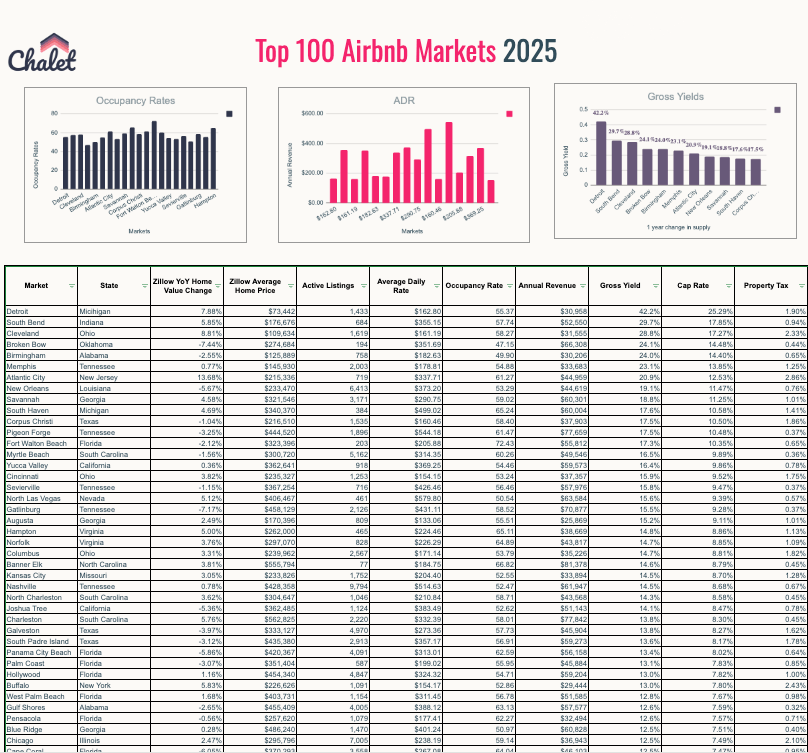Walk down any suburban street near Boston, Dallas, or Tampa and you’ll notice something interesting. That neat row of single-family homes? Fewer owners. More renters.
Sounds odd? Maybe not so much anymore.
Since 2020, U.S. home prices have shot up nearly 47% (Federal Reserve Economic Data). The average 30-year mortgage rate hovers around 6.8% (as of June 2025). Pair that with sticky inflation, student debt, and people getting married and having kids later — you get America’s next big shift: suburban renters are taking over.
So if you’re a short-term investor wondering where the next wave of Airbnb investing, midterm rentals, or built-to-rent plays could make sense — keep reading.
This guide breaks it down in plain English.
We’ll hit:
- Why suburbs are flipping to majority-renter neighborhoods?
- Where this is happening (Boston, Dallas, Tampa & beyond)?
- How to use real estate AI tools & smart Airbnb investing strategies?
- Why a solid Airbnb real estate agent still matters?
Free tool: Chalet STR Analytics
Suburbs Were Once for Owners, Not Anymore Now
Let’s rewind 10–15 years.Post-2008 crash, owning was cheap. 3% mortgage rates. Builders mass-produced single-family houses in outer metro areas think suburban Texas, Georgia, Florida.
Then COVID hit.People fled crowded cities for more space. Builders underbuilt.
Meanwhile, remote work stuck around. And investors big and small saw opportunity: Why sell when rents are rising?
Result? Suburban for-sale supply shrank, prices climbed, and local wages just couldn’t keep up.
Today, 6.08 million suburban households are renters (Harvard Joint Center for Housing Studies). About 15 major U.S. suburbs flipped to majority-renter status that’s historic.
Who Are These Suburban Renters?
- Families who want good schools but can’t swing a mortgage.
- Remote workers avoiding big city prices.
- Boomers downsizing but not buying again.
- Young couples not yet ready to commit.
For you, the investor, this means steady, reliable demand especially for good houses in walkable suburbs with decent amenities.
Top Suburban Hotspots to Watch
- Boston suburbs: Worcester, Lowell, Lynn — all seeing big renter surges.
- Dallas suburbs: Arlington, Garland, Mesquite — rents rose 25%+ since 2021.
- Tampa suburbs: St. Petersburg, Clearwater, Brandon — vacation + midterm combo.
Even places like Phoenix suburbs, Atlanta’s sprawl, and Charlotte’s edges are riding the same wave.
In 2023, suburban rents outpaced urban core rents by 1.5% (Apartment List).
So, What’s the Short-Term Play?
It’s pretty simple:
- Buy a suburban single-family or small multi-family
- Furnish it for short-term stays or midterm corporate housing.
- Keep it clean, manage guest turnover smartly.
- Enjoy stronger occupancy than many big-city condos.
The sweet spot? Travel nurse rentals, remote worker stays, family relocation housing, or seasonal stays near local events. The pandemic normalized flexible living and suburbs now check all boxes: cheaper than downtown, quiet, and bigger.
Why AI Airbnb Investing Makes This Easier Than Ever?
Okay here’s where real estate AI tools step up. You don’t need a massive property management team or brokers on speed dial.
Modern short-term rental investors use:
- AI pricing tools – Adjust nightly rates to beat your competition.
- AI-powered analytics – Tools like Chalet help you find profitable zip codes, occupancy trends, and revenue forecasts.
- AI guest communication – Automate guest replies, check-ins, local recommendations.
A 2024 AirDNA survey showed 78% of Airbnb hosts use at least one automation tool and AI is the new big lever.
So you save time. You keep listings dynamic. And you scale faster especially if you run multiple properties.







